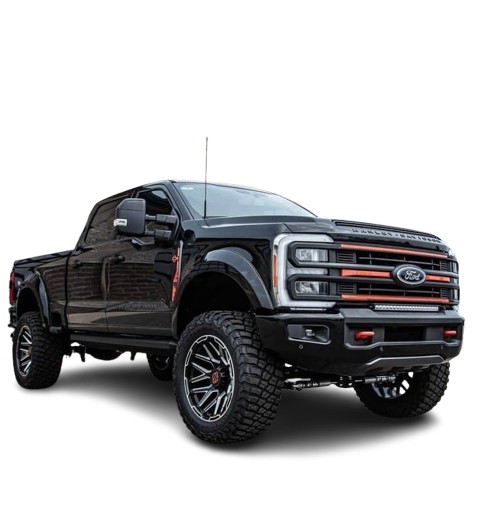Navigating auto parts catalogs can be daunting, especially for those new to vehicle maintenance or repair. This comprehensive guide will help you understand how to read and utilize auto parts catalogs effectively, making your shopping experience smoother and more efficient. By mastering the intricacies of these catalogs, you can ensure that you purchase the correct components for your vehicle, ultimately leading to better performance and longevity.
1. Understanding Catalog Structure
Sections and Categories
Auto parts catalogs are typically organized into various sections, allowing for easy navigation. Common categories include:
- Engine Parts: This section includes components like filters, belts, and gaskets. Familiarizing yourself with these parts can help you make informed decisions when performing engine maintenance or replacements.
- Brakes: This category covers brake pads, rotors, and calipers. Understanding the components of your braking system is crucial for safety and performance.
- Suspension: Here, you’ll find parts like shocks, struts, and springs, which are essential for vehicle handling and comfort.
- Electrical Components: This section includes batteries, starters, and alternators, which are vital for your vehicle’s electrical system.
By familiarizing yourself with these categories, you can quickly locate the parts you need. Shop Page
Index
Most catalogs include an index at the back, listing parts alphabetically or by category. This feature significantly simplifies the process of finding specific items. When searching for a particular part, always refer to the index first. It not only saves time but also enhances your overall shopping experience. Blogguidance.
2. Identifying Part Numbers
Importance of Part Numbers
Each part has a unique part number that ensures compatibility with your vehicle model. Understanding the significance of part numbers is crucial for successful repairs and maintenance. Always use the correct part number when searching to avoid confusion and potential mishaps.Shop Page
Cross-Referencing
If you have an old part, cross-referencing its number with those in the catalog can be an effective way to find the right replacement. This process involves comparing the part number of the old component with the entries in the catalog. If you’re unsure whether the replacement is compatible, consult a knowledgeable professional or refer to your vehicle’s manual.Shop Page
3. Understanding Descriptions and Specifications
Detailed Descriptions
Pay attention to the descriptions provided for each part. These often include critical details such as material, dimensions, and compatibility information. Understanding the specifications can help you make informed choices, ensuring that the parts you select meet your vehicle’s needs.
For instance, if you are looking for brake pads, the description might mention the type of material used (organic, semi-metallic, or ceramic) and the specific vehicles they are compatible with. Brake Parts
Specifications
Look for specifications such as weight, size, and manufacturer details, which help you determine if the part meets your vehicle’s requirements. Specifications are essential for ensuring that parts fit properly and function as intended.
For example, if the catalog lists a part with specific dimensions, it’s crucial to verify that those dimensions match the space available in your vehicle. Shop Page
4. Recognizing OEM and Aftermarket Parts
OEM Parts
Original Equipment Manufacturer (OEM) parts are components made by the vehicle’s manufacturer. These parts are designed to meet the exact specifications of your vehicle, ensuring guaranteed compatibility and performance. While they often come with a higher price tag, the investment is typically justified by their reliability and quality.
OEM parts can be essential for maintaining your vehicle’s warranty and ensuring that repairs meet manufacturer standards.The Benefits of Using High-Quality Auto Parts
Aftermarket Parts
Aftermarket parts are produced by third-party manufacturers. These components can often be more affordable than OEM parts, making them an attractive option for budget-conscious consumers. However, it’s crucial to ensure that aftermarket parts meet quality standards to maintain vehicle performance and safety.
When selecting aftermarket parts, look for brands with positive reviews and those that offer warranties, as this can be an indicator of quality. Exploring Aftermarket vs. OEM Auto Parts: Which Is Better?
5. Using Visual References
Diagrams and Images
Many catalogs include diagrams or images that illustrate where parts fit within the vehicle. These visuals are invaluable for confirming that you’re ordering the correct component. By visually identifying the part, you can avoid costly mistakes and ensure that the replacement fits perfectly.
When using diagrams, pay attention to any accompanying labels or part numbers, as they can provide additional clarity. How to Read and Understand Auto Parts Catalogs
Installation Guides
Some catalogs provide installation tips or guides, which can be particularly helpful if you plan to install the parts yourself. These guides often include step-by-step instructions, tools needed, and safety precautions, making the installation process easier and more manageable.
6. Consulting Customer Support
Ask for Help
If you’re unsure about a part or need assistance, don’t hesitate to contact customer support. Many reputable auto parts retailers have knowledgeable staff who can provide valuable insights and ensure you make the right choice. They can help clarify any confusion regarding part compatibility, specifications, or installation.Contact Us
Online Resources
Many auto parts retailers offer online catalogs with advanced search functions that simplify the process of finding the right parts. These online resources often feature detailed descriptions, customer reviews, and user-friendly interfaces, making it easier to navigate through various components.






One comment
[…] Leaks: Look under the vehicle for any fluid leaks, which can indicate problems with hoses or seals. […]